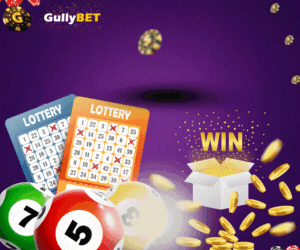
A ticking clock can turn even the calmest player into a quick decision-maker. In jackpot-style games, countdowns are more than a visual feature — they subtly guide attention, shape perception of time, and trigger emotions that influence choices. Understanding this psychology helps players stay mindful and helps designers create transparent, ethical interfaces that support informed play.
The psychology of countdowns in jackpots
Countdowns create a sense of urgency known as the “scarcity effect.” When something is about to end or run out, it feels more valuable. In jackpot-style games, timers show when a prize must drop or when a bonus round ends, signaling “act now.” This mechanism works similarly to retail flash sales or limited-time offers, activating the same cognitive bias that makes people react quickly to deadlines.
Research in Frontiers in Psychology (2024) shows that under time pressure, people rely more on instinct than analysis. Countdown timers can push players toward faster, less deliberate actions, especially when paired with vivid visuals or sound cues. Combined with the “near miss” effect — when almost winning feels motivating rather than discouraging — countdowns can heighten emotional involvement.
How to read countdown UIs responsibly
Modern jackpot interfaces often use timers to display when a prize “must drop.” A well-designed countdown helps players understand pacing without pressure. Transparent examples, such as the timers used in Hot Drop Jackpots, show exactly when a jackpot is scheduled to fall, which reduces uncertainty. Visual emphasis, such as color changes near the deadline, can still raise attention and urgency, so the best practice is clear timing without alarm-style effects.
This design contrasts with open-ended rollovers, where players never know when a jackpot might trigger. Predictable structures like those in Hot Drop Jackpots can encourage more mindful play because they give fixed time windows, instead of endless possibilities. Players can set personal reminders or stop-points before the countdown ends, ensuring decisions are intentional.
A transparent countdown should communicate fairness and timing, not provoke urgency. When players can see exactly how long remains and what happens when time expires, they stay informed, rather than reactive.
That balance echoes Cafe Casino’s message in its “Know your limits” Instagram post, which reminds players that breaks are part of responsible enjoyment. Short pauses between sessions help reset focus and ensure decisions come from clarity, not impulse.
View this post on Instagram
Why timers change perception of control
Time cues reshape how players perceive control and luck. A visible countdown creates predictability — a fixed endpoint that feels easier to manage. This differs from random or hidden triggers that make users believe persistence will “pay off,” reinforcing the near-miss lottery effect.
In behavioral economics, this relates to temporal framing: when an opportunity appears to shrink in time, emotional intensity rises. People are wired to act when closure feels near. For jackpot-style games, this means timers can either guide calm engagement or amplify tension, depending on design.
Balanced timers inform, rather than rushing. Ethical UX teams often test whether users interpret countdowns accurately without added stress. If players report anxiety or pressure, designers refine cues to be more informative and less intense.
Supporting responsible decision-making
Understanding countdown psychology allows players to take back control. Before starting, decide how long to play or how many rounds to join. Setting a separate timer on your phone or scheduling a brief break reinforces that boundary.
Here’s a quick checklist for interpreting countdown interfaces responsibly:
- Check clarity: Does the timer clearly show when the event ends?
- Observe tone: Are visuals calm or designed to spark urgency?
- Identify pauses: Is there an easy way to stop or take a break?
- Look for neutral phrasing: Terms like “must drop by” convey timing without emotional triggers.
- Use personal limits: Decide in advance how many spins or minutes to play, and stick to it.
Applying these checks helps maintain the balance between excitement and self-awareness.
The future of ethical jackpot UX
Designers are now treating countdowns as part of responsible design. Rather than removing them, the goal is transparency — visible time frames, calm visuals, and built-in pauses. Some platforms test gradual dimming effects as deadlines approach, instead of flashing alerts, to reduce perceived pressure.
Clear and predictable information can support healthier engagement, although results depend on presentation and player habits. Pop-up reminders and in-session messages show moderate short-term benefits, especially when paired with self-set limits. In other words, informed awareness works best alongside proactive self-control.
Countdowns can inform rather than provoke. When built carefully — as seen in structured examples like Hot Drop Jackpots — timers become part of an ethical design language that supports awareness, autonomy, and fair pacing. The more players understand how urgency works, the better they can manage their rhythm of play.
Ultimately, countdowns are tools. Whether they support mindfulness or impulsivity depends on their design — and the awareness of those watching the clock. By recognizing how timing cues affect decisions, players can keep gaming fun, balanced, and fully in their hands.

Leave a Reply